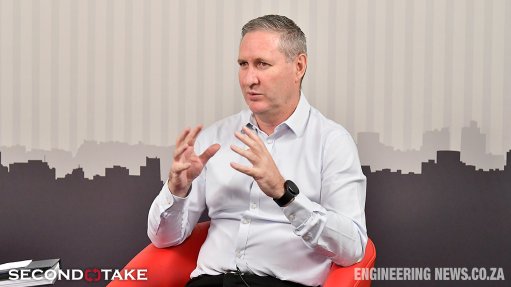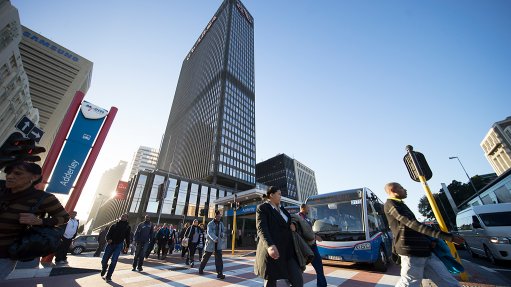Automotive-linked trade deficit falls sharply, but remains large
South Africa’s automotive industry recorded a trade deficit of R24-billion for 2013, almost half the R42.3-billion deficit of 2012.
Vehicle and components exports reached R102.7-billion last year, compared with imports to the value of R126.7-billion, says Automotive Industry Export Council director Dr Norman Lamprecht.
South Africa’s total trade data was adjusted in 2013 to include data from Botswana, Lesotho, Namibia and Swaziland, as the South African Revenue Service said this should provide a more accurate reflection of the country’s trade.
Historically, transactions with these four countries are excluded in the trade statistics, because of the free flow of trade in the Southern African Customs Union.
Automotive statistics now also reflect this change in calculation.
Exports from South Africa’s automotive industry comprised 11.1% of total South African exports of R927.36-billion in 2013, while automotive industry imports comprised 12.7% of total imports of R998.28-billion.
Despite the significant increase in vehicle and automotive components exports in recent years, the South African automotive industry has remained a net user of foreign exchange, says Lamprecht.
Capital-intensive, high-value components such as engines, gearboxes and interior electronic components are mainly imported.
The industry’s reliance on foreign global designs and technologically sophisticated plant and machinery also contributes to the outflow of foreign exchange, he adds.
However, Lamprecht says there is hope the automotive industry’s contribution to South Africa’s stubbornly high trade deficit may shrink further, under government’s new Automotive Production Development Programme (APDP), imple- mented in January 2013.
A tweak in methodology to calculate the automotive industry’s annual trade balance may also assist.
The APDP focuses on doubling vehicle production in the country by 2020, aided by initiatives such as the Automotive Supply Chain Competitiveness Initiative project, which aims to improve the viability of investments, export contracts and localisation of parts in the South African automotive sector.
Government’s previous support programme, the Motor Industry Development Programme (MIDP), functioned differently, and supported not only local production but, inadvertently, also imports.
The MIDP was an import/export complementation scheme, where vehicles and automotive parts and components eligible under the programme were exported and imported, explains Lamprecht.
“The level of imports was a function of the success of the programme, as local production benefits could only be used to rebate the duties on vehicles and components imported.”
Under the APDP, the basis for calculating duty-free import credits is based on the value added locally throughout the supply chain in the automotive manufacturing industry.
There are certain eligibility requirements under the programme to ensure that the beneficiaries are companies producing substantial quantities of components for vehicle manufacturing, and to exclude vehicle accessories.
With the exception of automotive tooling, which is used in the production processes of vehicles and automotive components, replacement part imports are no longer linked to value addition in the country under the APDP, and are, therefore, not included in the automotive trade balance.
This should serve to better monitor the progress of the APDP as a manufacturing support programme, says Lamprecht.
He adds that several factors have led to the R24-billion trade deficit recorded in the local automotive industry in 2013.
The rand’s depreciation, on a trade-weighted basis of more than 20% against major currencies during the year increased the costs of imports, while exports slowed down owing to the ongoing weakness in Europe, the domestic automotive industry’s main trading partner.
Industrial action experienced during the third quarter of 2013 also curbed vehicle exports, and some 58 000 vehicles were lost on South African factory floors countrywide.
Components exports were also affected.
This, in turn, had an impact on the industry’s trade balance, as the expected higher exports for 2013 did not materialise.
Comments
Press Office
Announcements
What's On
Subscribe to improve your user experience...
Option 1 (equivalent of R125 a month):
Receive a weekly copy of Creamer Media's Engineering News & Mining Weekly magazine
(print copy for those in South Africa and e-magazine for those outside of South Africa)
Receive daily email newsletters
Access to full search results
Access archive of magazine back copies
Access to Projects in Progress
Access to ONE Research Report of your choice in PDF format
Option 2 (equivalent of R375 a month):
All benefits from Option 1
PLUS
Access to Creamer Media's Research Channel Africa for ALL Research Reports, in PDF format, on various industrial and mining sectors
including Electricity; Water; Energy Transition; Hydrogen; Roads, Rail and Ports; Coal; Gold; Platinum; Battery Metals; etc.
Already a subscriber?
Forgotten your password?
Receive weekly copy of Creamer Media's Engineering News & Mining Weekly magazine (print copy for those in South Africa and e-magazine for those outside of South Africa)
➕
Recieve daily email newsletters
➕
Access to full search results
➕
Access archive of magazine back copies
➕
Access to Projects in Progress
➕
Access to ONE Research Report of your choice in PDF format
RESEARCH CHANNEL AFRICA
R4500 (equivalent of R375 a month)
SUBSCRIBEAll benefits from Option 1
➕
Access to Creamer Media's Research Channel Africa for ALL Research Reports on various industrial and mining sectors, in PDF format, including on:
Electricity
➕
Water
➕
Energy Transition
➕
Hydrogen
➕
Roads, Rail and Ports
➕
Coal
➕
Gold
➕
Platinum
➕
Battery Metals
➕
etc.
Receive all benefits from Option 1 or Option 2 delivered to numerous people at your company
➕
Multiple User names and Passwords for simultaneous log-ins
➕
Intranet integration access to all in your organisation


















